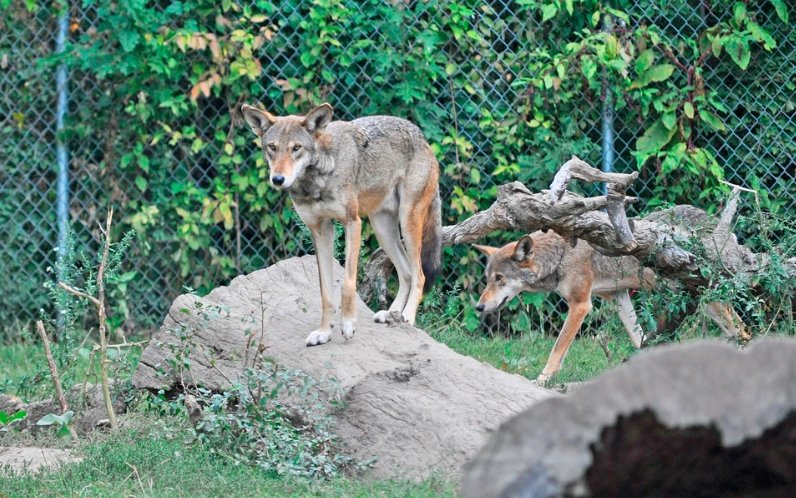Ranchers and local leaders voice their concerns over lack of notice and consultation
Colorado Parks and Wildlife (CPW) released five wolves in Grand County on Monday, December 18, 2023, as part of the state’s voter-approved wolf reintroduction plan. However, the agency did not inform the public until after the release happened, sparking outrage and frustration among ranchers and local leaders who felt blindsided by the decision.
The release of the wolves, which were captured in Oregon and flown to Colorado, marked the start of the most ambitious wolf reintroduction effort in the U.S. in almost three decades. The plan, which was passed by a narrow margin of 57,000 votes in 2020, aims to restore a viable population of wolves to the western part of the state by 2025.
CPW officials said they did not disclose the exact location of the release in the north-central mountains to protect the wolves and the staff members involved. They also said they followed the legal and ethical protocols for the reintroduction, and consulted with various stakeholders, including landowners, wildlife managers, and conservation groups.
However, many ranchers and local leaders in Grand County said they were not notified or consulted about the release, and expressed their concerns over the potential impacts of wolves on their livestock, livelihoods, and safety.
Wolves face mixed reactions from Colorado residents
Wolves have been absent from Colorado since the 1940s, when they were eradicated by hunters and government-sponsored poisoning campaigns. Since then, wolves have been the subject of intense debate and controversy among Colorado residents, who have divided opinions on whether the predators should be welcomed back or kept out of the state.

Wildlife advocates and environmentalists have hailed the wolf reintroduction as a historic and necessary step to restore a key species to the ecosystem, and to balance the populations of elk, deer, and other prey animals. They also argue that wolves have ecological, economic, and cultural benefits, such as enhancing biodiversity, attracting tourism, and honoring the Native American heritage.
On the other hand, ranchers and hunters have opposed the wolf reintroduction, citing concerns over the harms to cattle, sheep, and hunting game herds. They also fear that wolves will pose a threat to human safety, especially in rural areas where people live close to wildlife. They claim that the wolf reintroduction plan was imposed by urban voters who do not understand the realities and challenges of living with wolves.
Colorado’s wolf reintroduction plan faces legal challenges
The wolf reintroduction plan has also faced legal challenges from various groups who seek to delay or stop the process. On Monday, December 14, 2023, several groups, including the Gunnison County Stockgrowers’ and the Colorado Cattlemen’s associations, filed a lawsuit against the U.S. Fish and Wildlife Service, alleging that the agency failed to conduct adequate environmental reviews and consultations before approving the wolf reintroduction.
The lawsuit asked a federal judge to issue a temporary restraining order to halt the release of the wolves, but the judge denied the request on Thursday, December 16, 2023, saying that the plaintiffs did not show a likelihood of success on the merits of their claims. The judge also noted that the state had already captured the wolves in Oregon and was planning to release them as soon as Monday, December 18, 2023.
The lawsuit is still pending, and the plaintiffs have vowed to continue their fight to protect their interests and rights. They have also asked the state to reconsider its wolf reintroduction plan, and to involve more input and collaboration from the affected communities.
What’s next for the wolves and the state?
The five wolves that were released on Monday are expected to disperse from the release site by up to 70 miles and stay on the move for weeks until they find suitable habitat. They are fitted with GPS collars that will allow CPW to monitor their movements, health, and behavior. CPW plans to release more wolves in the coming months and years, until the state reaches its goal of establishing a self-sustaining population of at least 250 wolves.
CPW also plans to implement a wolf management plan that will address the issues and concerns of various stakeholders, such as ranchers, hunters, conservationists, and the public. The plan will include measures to prevent and mitigate conflicts between wolves and humans, such as providing compensation for livestock losses, implementing non-lethal deterrents, and enforcing regulations and penalties for illegal wolf killings.
CPW also hopes to foster a culture of coexistence and respect for wolves, and to educate the public about the role and value of wolves in the ecosystem. The agency invites the public to participate in the wolf reintroduction process, and to share their feedback and suggestions through its website and social media platforms.
The wolf reintroduction in Colorado is a historic and unprecedented endeavor that will have significant and lasting impacts on the state’s wildlife, environment, and society. It is also a complex and controversial issue that will require cooperation and compromise from all parties involved. As the wolves return to their ancestral home, the state faces the challenge and opportunity of finding a balance between conservation and human interests, and of creating a shared future for people and wolves.














